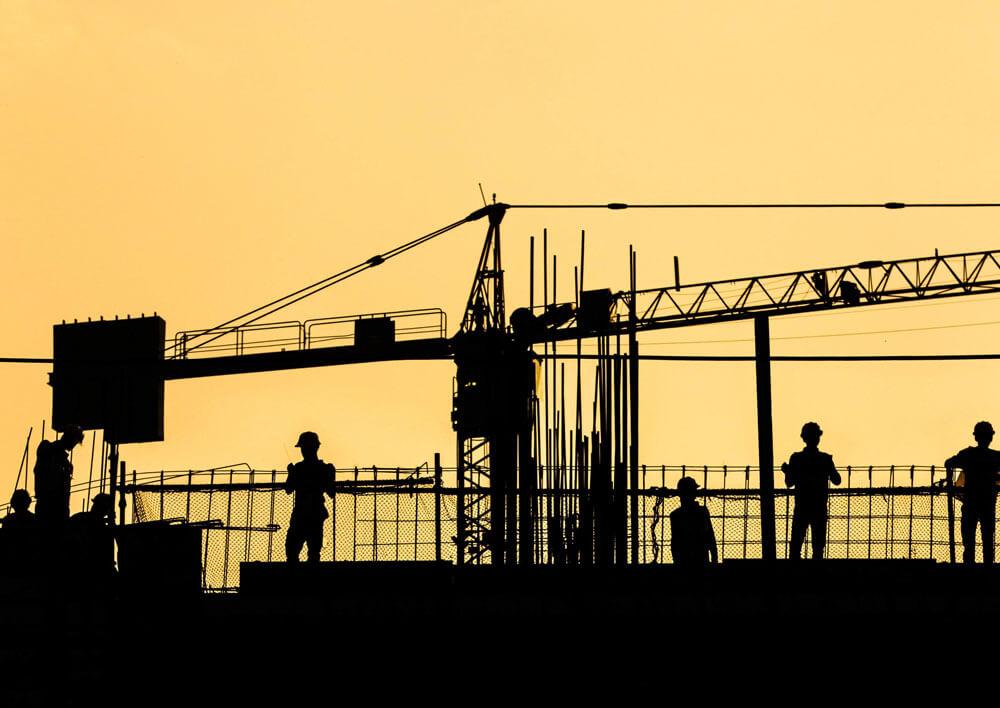In this article of ‘Case Studies in Net Zero Buildings,’ we delve into real-world examples of architectural feats that not only meet the eye but also serve the environment. These buildings are not just constructions; they are living, breathing entities that contribute to a healthier Earth by maintaining a balance between the energy they consume and the energy they produce. From urban offices to educational campuses, each case study will take you on a journey through the challenges and triumphs of creating spaces that coexist in harmony with nature, aiming for a carbon footprint that is as light as a whisper. Join us as we explore these monuments of modern-day engineering that stand as testaments to a future where sustainability is not just an option, but a foundation of design.
Case Study 1: Adlai E. Stevenson High School’s East Building Addition, Illinois
Project Overview:
In 2021, Adlai E. Stevenson High School in Lincolnshire, Illinois, unveiled its East Building Addition (EBA I), achieving the distinction of being the first verified net- zero energy school building in the state. Spanning 56,800 square feet, EBA I earned its Zero Energy certification from the International Living Future Institute (ILFI) by generating all its annual energy consumption onsite through renewable resources. Integrated Design Approach:
From the inception stage, the design team implemented a collaborative approach to optimize the building’s energy efficiency, daylighting, and renewable energy systems. Energy modeling informed the development of the envelope and mechanical systems, ensuring cost-effective minimization of heating and cooling loads.
Key Efficiency Strategies:
The project successfully combined several passive and active strategies:
● Maximized Daylighting: Building orientation and extensive glazing strategically harness natural light, with over 97% of spaces benefiting from daylight utilization. Photocell sensors automatically adjust or disable artificial lighting when sufficient natural light is available.
● High-Performance Envelope: R-30 insulated walls, R-50 roof, and low-E insulated glazing contribute to reduced heating and cooling demands.
● Natural Ventilation: Numerous spaces employ natural ventilation and ceiling fans to minimize mechanical cooling needs.
● VRF System: A high-efficiency variable refrigerant flow (VRF) system provides zoned heating and cooling, ensuring optimal comfort throughout the building.
CO2 Demand Control: The ventilation system adjusts outside air intake based on real-time occupancy data, optimizing fresh air circulation.
● Energy Recovery: Energy recovery ventilators pre-condition incoming air, further enhancing energy efficiency.
● Renewable Energy Solutions: A strategically placed 630 kW rooftop solar PV system offsets 100% of the building’s predicted 550 MWh annual electricity usage, enabling net-zero energy performance.
Performance Outcomes:
During its first year of operation, the EBA I building consumed 510 MWh of energy but generated 534 MWh onsite from the solar PV system, achieving a net positive energy outcome. The estimated simple payback period for the additional costs associated with high-efficiency equipment and renewables is 12 years, demonstrating the project’s financial viability.
Beyond Energy Efficiency:
Student Wellness: Building design prioritizes biophilia, with 98.8% of spaces offering views to the outdoors, fostering a connection with nature for students. Biophilic elements like living green walls and a green roof contribute to a tranquil learning environment.
Daylight Benefits: 97.7% of the space is daylit, not only contributing to energy savings but also enhancing student well-being through natural light exposure.
Sustainability Impact: The photovoltaic array generates more energy than it consumes, resulting in an estimated annual electricity cost savings of $65,000 for the school.
Green Design Features: Two two-story living green walls not only improve aesthetics but also enhance air quality by filtering carbon dioxide and particulates, further reducing energy consumption by minimizing the VRF system’s workload.
Performance Data:
The school has a history of investing in sustainability. The existing campus achieved LEED EBOM Gold in 2011 and was recertified in 2016 and 2021.
The Energy Use Intensity (EUI) of the EBA I building addition is 32; when including PV generation in the energy balance, the EUI is -3.
Conclusion:
By generating clean energy and minimizing its environmental footprint, the Adlai E. Stevenson High School EBA I project stands as a beacon of inspiration for the next generation of net-zero energy schools, demonstrating the viability and success of such projects even in challenging climates.
Case Study 2: 435 Indio Way: A Case Study in Net-Zero Energy Design
Project Overview:
435 Indio Way, a retrofitted office building in Sunnyvale, California, stands as a testament to the feasibility and financial viability of net-zero energy (NZE) design in existing structures. This project shatters the notion that NZE buildings are solely reserved for new construction, demonstrating its successful implementation in a pre- existing framework.
Location: Sunnyvale, CA Project Size: 31,759 SF Construction Type: Retrofit Completion Date: 2013 Occupied Date: May 2014 Building Type: Office Climate Zone: 4
Planning & Design Approach:
From the outset, the design-build team pursued a clear objective: achieve NZE performance while simultaneously exceeding the profitability of a code-minimum renovation. This ambitious goal guided the implementation of a strategic blend of NZE design features, each evaluated for its impact on profitability compared to a standard approach.
Key Energy Efficiency Strategies & Features:
● Daylighting & Lighting: Prioritizing natural light penetration, skylights, windows, and doors were strategically incorporated. Forty-three daylight cupolas carved into the roof minimize heat gain and loss while maximizing direct sunlight. Dynamic Glass’s View electrochromic windows (self-tinting), totaling nearly 2,000 square feet, were installed in both fixed and operable units, with operable windows featuring motorized automation for natural ventilation.
● Envelope: Night ventilation of thermal mass is a cornerstone strategy at 435 Indio. Interior concrete walls and slabs act as an efficient heat sink. Exterior wall insulation facilitates exposure of the thermal mass on the interior, enabling heat exchange with cool night air.
● HVAC & Natural Ventilation: Skylights and ground-level windows open automatically via actuators, while eight-foot steel fans facilitate air circulation as part of a night flushing program for pre-cooling the thermal mass during warmer months. Additional perimeter windows offer manual operability for tenant comfort.
● Plug Loads: Acknowledging the significant energy consumption associated with plug loads (58% in this case due to the open-plan tech firm occupancy), tenants receive targeted information and recommendations for plug load management and energy reduction upon leasing.
● Controls: A dedicated building controls company and Master System Integrator collaborated to develop an “omni-controller” that monitors the coordinated operation of all passive systems. This intelligent system enables manual, automatic, and remote control of fans, windows, and other building functions.
● Renewable Energy Generation & Storage: A 113.2-kW flat-panel solar photovoltaic system blankets the roof, complemented by two solar thermal panels for hot water generation. The system produces an impressive 266,000 kWh of electricity annually, with the solar thermal system contributing an additional 500 kWh.
Performance Data:
Annual energy consumption: 265,000 kWh
Annual solar energy generation: 300,000 kWh
Site Energy Use Index (EUI): -15.2 (BUILDING EUI: 13.5; RENEWABLE PRODUCTION RPI: 28.7)
Operating cost reduction: $25,000 per year
Impact & Performance:
435 Indio Way serves as a groundbreaking prototype for a ubiquitous building type in the real estate market. As one of the first successful examples of its kind, it proves the feasibility and financial attractiveness of cost-effective NZE office buildings. Design choices contribute exponentially to the property’s value, with initially higher costs recouped and surpassed. In fact, the building’s potential selling price exceeds that of a typical code-minimum building by approximately $150 per square foot. This project demonstrably establishes sustainable renovation as not only cost-effective, but also more profitable than traditional methods.
Case Study 3: Achieving Net Zero Energy at the Jhansi Library by BOOTES
Project Overview:
The Jhansi Library in Uttar Pradesh, India, stands as a beacon of net-zero architecture and sustainable construction, a pioneering project led by BOOTES. Aligned with India’s Net Zero Vision 2070, the library seamlessly integrates ancient design principles with cutting-edge technologies to create a modern, environmentally friendly educational facility.
Key Achievements:
● First Net-Zero Library in India: Jhansi Library marks a historic milestone as the nation’s first public library achieving net-zero energy consumption through on- site renewable energy generation.
● Innovative Cooling System: Cutting-edge radiant cooling technology, powered by on-site solar and wind energy, slashes HVAC electricity consumption by 80% compared to conventional systems.
● Sustainable Construction: Eco-friendly practices shine through the use of locally-sourced and recycled materials, minimizing the project’s carbon footprint.
● Comprehensive Sustainability Approach: Water conservation is addressed through rainwater harvesting and greywater treatment, while natural light and ventilation further reduce energy dependence.
BOOTES’ Expertise in Action:
This project showcases BOOTES’ comprehensive capabilities in delivering net-zero solutions:
• Integrated Design Process: From the outset, BOOTES employed an integrated approach, optimizing passive design strategies, energy efficiency, and renewable energy integration for optimal performance.
• Climate-Responsive Architecture: Extensive climate modeling and responsive design ensured maximized natural daylight and passive ventilation, minimizing heat gain across the 9,000 sq ft building.
• Leading-Edge Technologies: BOOTES implemented high-performance building envelope materials, triple-glazed windows, and energy-efficient lighting systems, achieving an 80% reduction in lighting power density.
• Renewable Energy Powerhouse: A 130 kW rooftop solar photovoltaic system, supplemented by vertical axis wind turbines, generates over 120% of the building’s modeled energy consumption.
Efficiency Measures
Steps were taken to enhance the envelope, lighting systems, and HVAC equipment efficiency:
• Wall and roof insulation values exceeded national building code requirements by over 40% to minimize heat gain and loss.
• High performance triple glazed windows with low U-factor and SHGC values reduced solar heat gain by 52% compared to standard double-glazed windows.
• Photosensors, timers, and dimming controls enabled a lighting power density of just 0.5 W/sq ft, an 80% reduction from conventional library lighting.
• Air quality was enhanced by dedicating the HVAC system to providing 100% filtered fresh air rather than recirculated air.
Performance and Impact:
• Surplus Renewable Energy: The Jhansi Library’s renewable energy systems generate 15% more electricity than consumed, demonstrating the effectiveness of BOOTES’ approach.
• Replicable Model for Public Buildings: This project serves as a model for implementing net-zero energy in public buildings affordably, using locally available resources.
• Environmental Champion: The library prevents over 300 tons of CO2 emissions annually, aligning with India’s climate change commitments and UN Sustainable Development Goals.
Beyond Construction:
BOOTES’ commitment extends beyond construction, offering valuable learnings:
• Passive Design & Energy Modeling: Utilizing passive solar design and energy simulations ensures optimization of efficiency measures and renewable systems.
• Well-Insulated Envelopes: The importance of well-insulated building envelopes in hot climates for maintaining thermal comfort is highlighted.
• Diverse Renewable Sources: Utilizing solar PV with a supplemental renewable source, like wind, provides resilience and energy security.
• Post-Occupancy Monitoring: Continuous energy use monitoring helps identify further optimization opportunities for improved net-zero performance.
Jhansi Library stands as a testament to BOOTES’ leadership in sustainable design and construction. This project empowers communities through essential educational infrastructure while paving the way for a carbon-neutral future in India.
Know more about Jhansi Library: https://bootes.in/jhansi-library/







